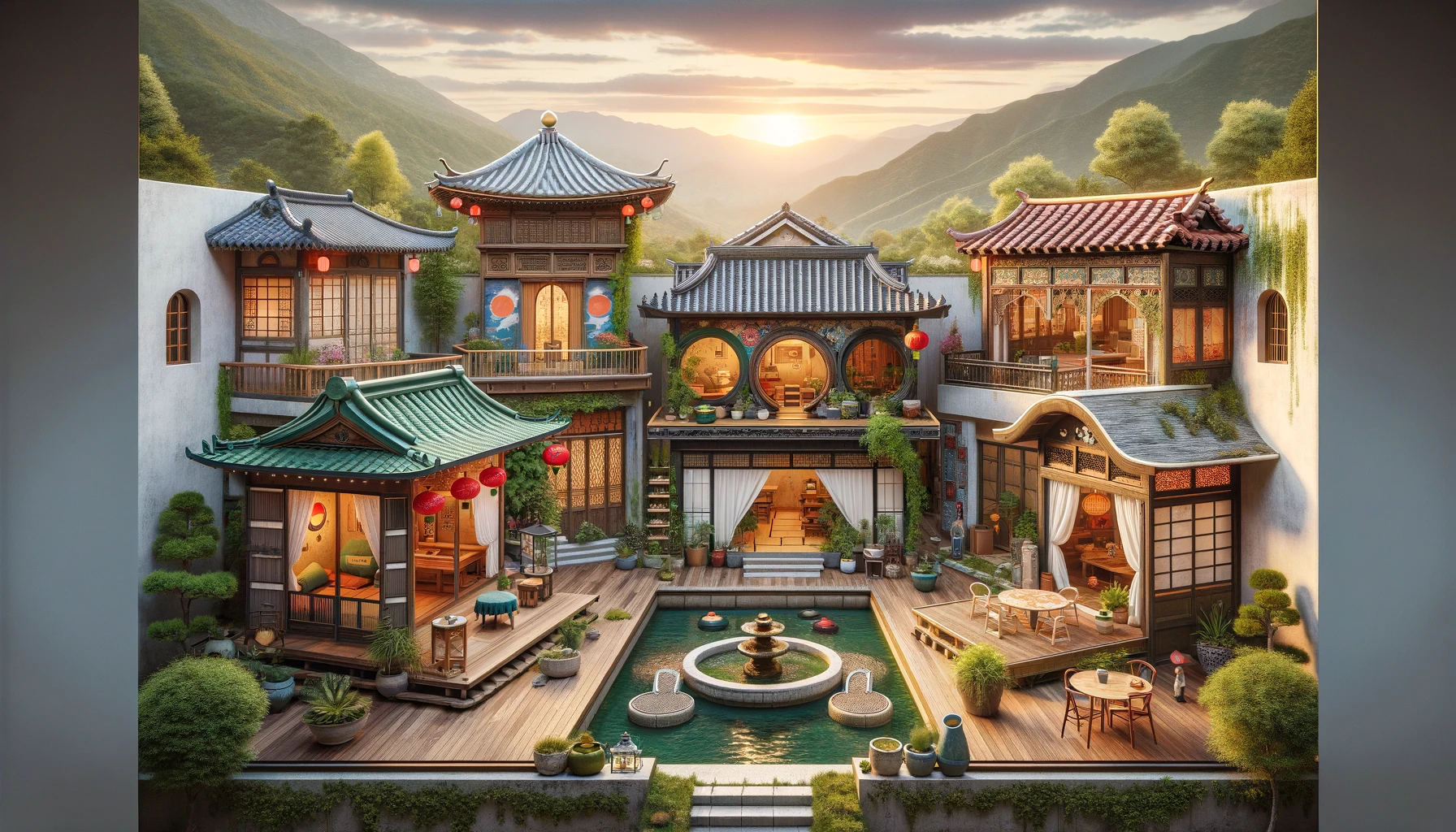The Architecture of Tea Houses: Blending Design and Tradition

The architecture of tea houses, whether nestled in the tranquil gardens of Japan or the bustling streets of China, presents a fascinating blend of design and tradition that captures the essence of tea culture.

These structures are not merely places to enjoy a cup of tea; they are sanctuaries that embody the philosophical and aesthetic ideals of their respective cultures.
In Japan, the traditional tea house, known as chashitsu, is an epitome of minimalist design, emphasizing simplicity, harmony, and the natural beauty of its surroundings. The design often incorporates elements of Zen Buddhism, with a focus on wabi-sabi, an appreciation of the beauty in imperfection and transience. The interior layout is compact and intimate, featuring tatami mat flooring and shoji sliding doors, creating a flexible space that fosters a sense of closeness among guests. The use of natural materials such as wood, bamboo, and paper in the construction not only ages gracefully but also adds warmth and authenticity to the tea house .
The chashitsu is meticulously planned, from the small and low entrance that requires guests to bow, symbolizing humility, to the tokonoma alcove, where a scroll of calligraphy or a brush painting is hung, reflecting the season or the occasion of the tea ceremony. The design of the tea house and its garden aims to create a seamless connection between the interior space and the natural environment, enhancing the tranquility and serenity of the tea ceremony experience.
Chinese tea houses, on the other hand, draw heavily on the principles of balance, symmetry, and harmony with nature, as reflected in their architecture and layout. Traditional Chinese tea houses may feature courtyards, tea rooms, and pavilions, with a design that emphasizes the connection with the surrounding landscape. Elements such as rocks, water features, and meticulously designed gardens are integral to the tea house, inviting guests to a contemplative engagement with nature.
In both cultures, the tea garden plays a crucial role in setting the atmosphere for the tea ceremony. In Japan, the roji, or dewy path, guides participants to the tea house, while the chaniwa surrounds the structure, creating a calm space for the ceremony. The garden design principles of simplicity (kanso) and naturalness (shizen) ensure an uncluttered and organic environment that complements the tea house.
While traditional tea houses in Japan and China serve as custodians of centuries-old tea ceremony practices, they continue to adapt and evolve. Modern tea houses often blend traditional design elements with contemporary innovations, catering to new generations of tea enthusiasts while preserving the spirit and rituals of the tea ceremony. This dynamic interplay of tradition and modernity ensures that the architecture of tea houses remains a vibrant and living tradition, deeply rooted in the cultural heritage of tea drinking.
The architecture of tea houses, therefore, is much more than mere construction. It is a thoughtful manifestation of cultural values, aesthetics, and the philosophical underpinnings of tea culture, offering a serene oasis that transcends the act of tea drinking to become a meditative and communal experience.
Leave a Reply